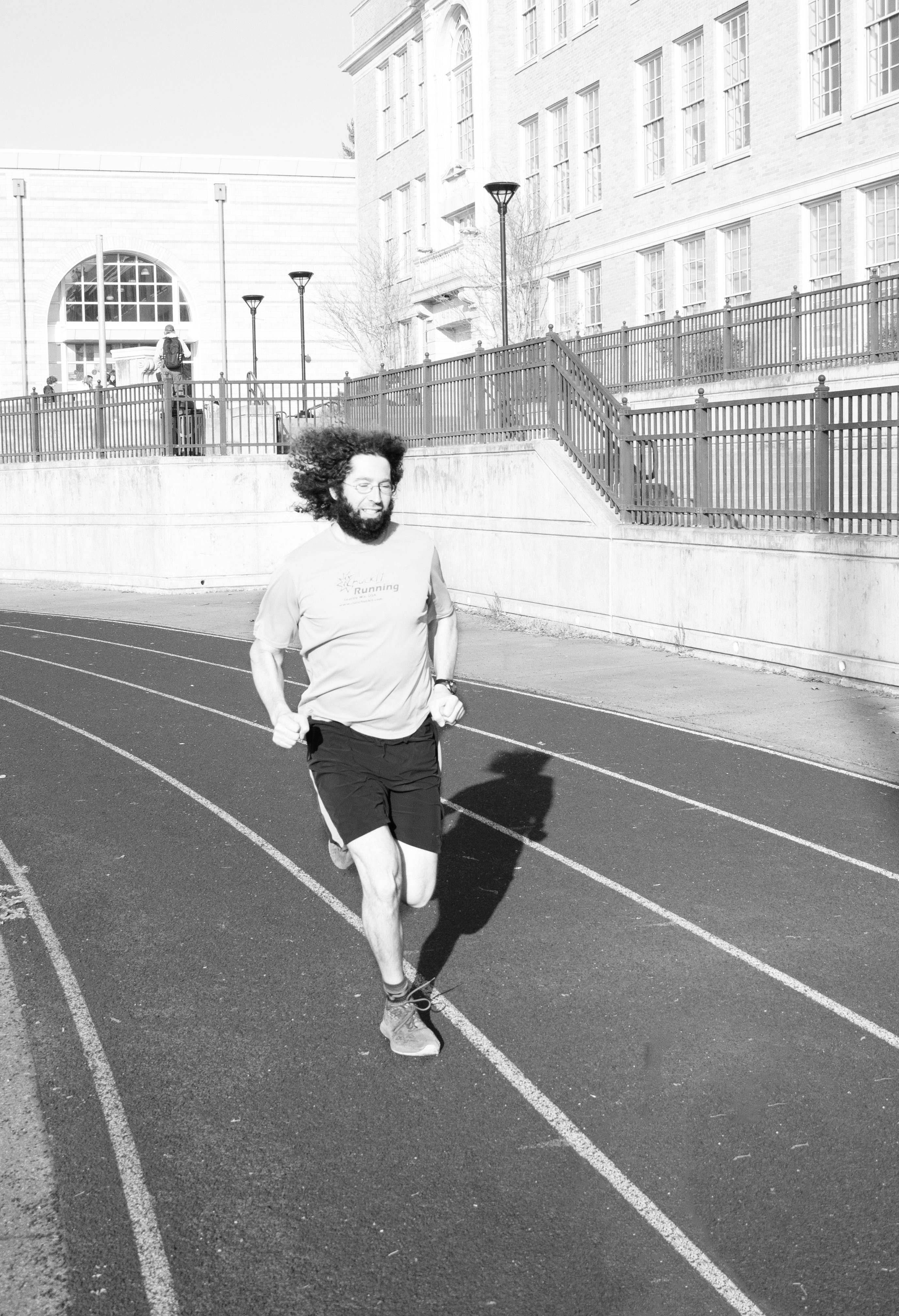It’s not unusual for students to participate in athletics. In fact, one could argue it’s expected. For adults, however, taking part in a sport or physical activity is less common.
According to Harvard’s School of Public Health, out of the 73% of adults who played sports when they were younger, only 25% continue to play into adulthood. Despite this low statistic, part of Roosevelt’s very own staff are regular participants in sport.
Counseling secretary Maya McKenzie and her husband, for example, have their own dojo. Karate has been a focal point in her life since childhood, when she was first introduced by her parents.
“My mom’s Japanese, my dad’s Swedish,” she says. “So they wanted … some way that I could connect culturally, since we were away from all of my Japanese family.”
McKenzie was eight when she first started doing karate. “I took time off during high school and college just because I was doing other sports and I moved away,” relates McKenzie, when asked for an estimate of how long she’s done karate. “Total, I’ve probably been doing it for, like, 15 to 18 years.”

Bryan Marenstein running on the Roosevelt track
Currently, McKenzie is actively training and competing in karate, as well as officiating it.
“It’s different now than when I was younger,” McKenzie remarks. “I loved team sports … Now, I do a little bit of everything. So I do teaching and coaching too, you know, seeing our younger students grow. And competing and training them is always a lot of fun.”
Ian Malcolm, a teacher in the Social Studies department, has had a similar experience with sports, specifically, pickleball and ping pong. He first started playing pickleball in the ‘80s.
“I liked it so much I actually bought paddles in the ‘90s and played it in college, at the UW,” Malcolm remembers. “It has a very low entry point in terms of skill. You can play with old people, you can play with young people. It is a super fun sport.”
Pickleball is Washington’s state sport, and is the most rapidly growing sport in America. It’s a combination of tennis, ping pong, and badminton, with the aim of hitting a light plastic ball. Malcolm’s been playing it since his PE class in the ‘80s.
“I took my sons … almost every weekend to play pickleball. And a community of people started playing, and we play every weekend,” Malcolm explains. “It can be a competitive sport, and you can play in tournaments. But you also can just go with your friends and play at the park.”
When asked about ping pong, Malcolm says he was originally introduced to the sport by his father. “My dad had a table in his basement, and he was good. He played me almost every day, and then my brothers got good, and we’d play. Then my friends would come over and we’d play.”
Bryan Marenstein is a physics and math teacher at Roosevelt. His childhood athletic background is cut from the same cloth, consisting of passion for running, biking, and basketball.
“My dad was a big runner, biker,” he remarks. “And so he got me interested in it and we’d go running and biking together. I think it was only near the end of high school that I even could truly keep up with him running.”
The Benefits of Team Sports for Adults, an article written by Apex Indoor Sports, notes that “Being on a team is a sociable activity … It is a casual, fun environment where you can make new friends simply by showing up and playing the game”—a sentiment that was echoed by each staff member interviewed.
“It’s kind of cool to just have that connection,” McKenzie shares. “See people in the hall and be like, ‘Hey, I’m gonna see you at practice tonight, right?’”
In addition, staff members commented on enjoying the chance to be outside, breathing in the fresh air.
“I generally don’t like sitting in,” Marenstein says. “I am not a fan of being indoors … I really like to be outside … It’s a nice way to get places and be social.”
Malcolm shares the same sentiment, relaying that: “My job is more intellectual and more sedentary as a teacher. That’s also a reason why I really enjoy fly fishing, because I’m outdoors and I’m moving around, interacting with the world, the outside world.”
Traditional or non-traditional, sports are just one of those activities that bring people together, regardless of whether the participant is a teacher, student, or community member. This also applies to work environments— compared to minors, teachers spend just as much time, if not more, inside. It’s important and enjoyable for them to get outdoors and take in the fresh air.
Especially in the past year, a majority of time was spent inside, confined to individual spaces and screens. Now, the chance to be outside and spend time with others— play with others— is an experience that brings bright joy into each athlete.

